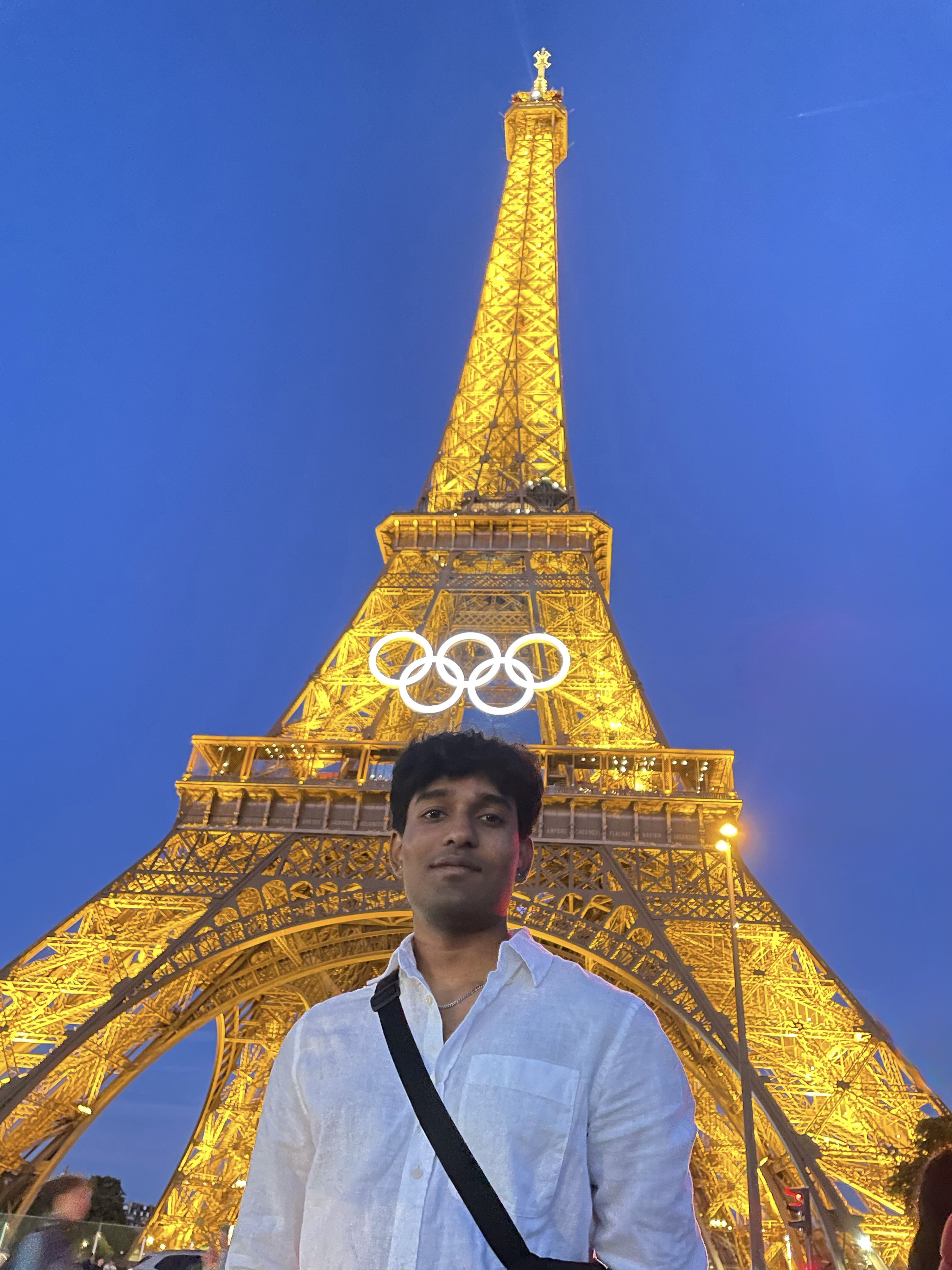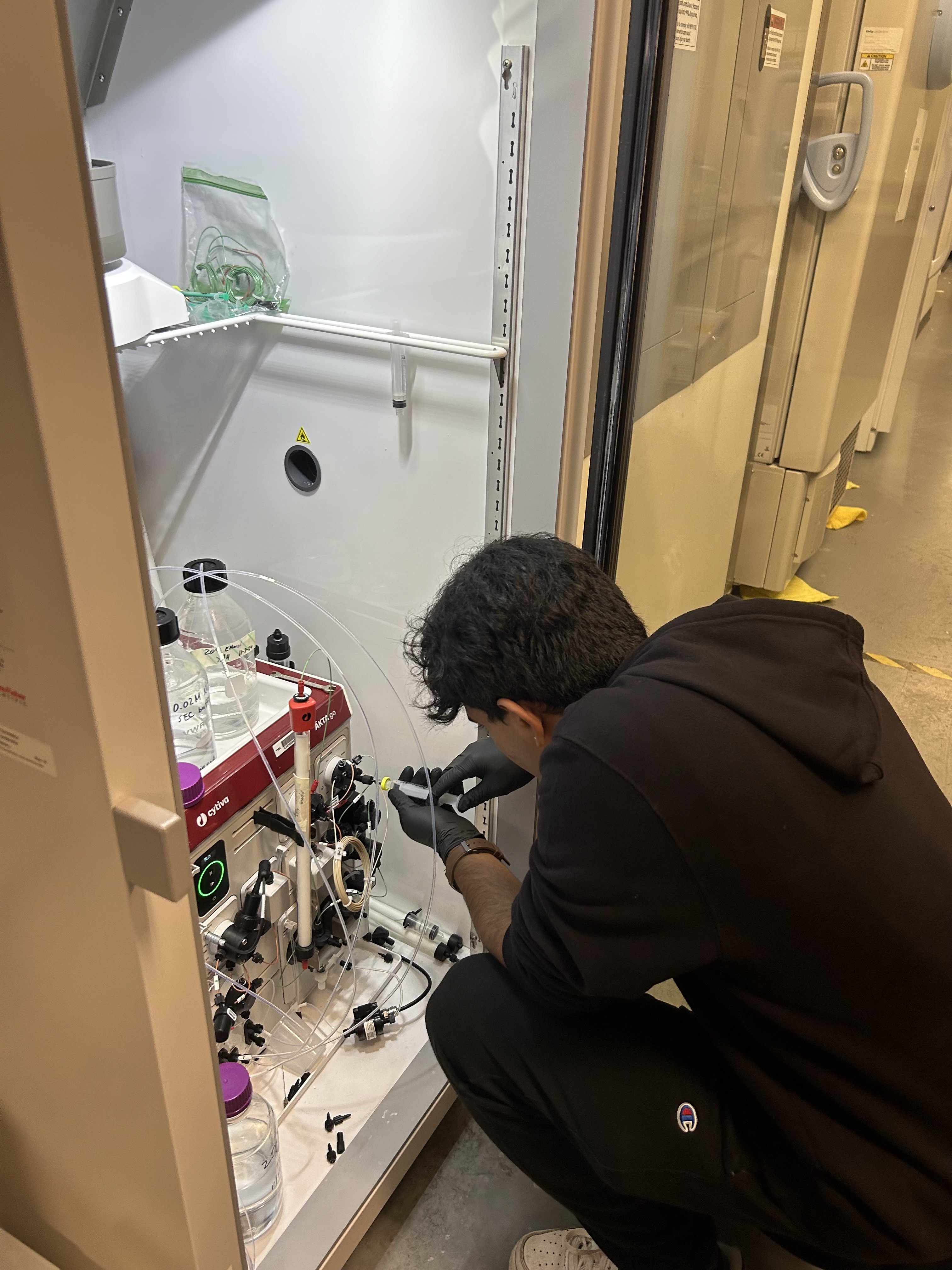Pranay Ramaswamy is a 3rd-year Biochemistry major studying protein aggregation in Alzheimer’s disease with Dr. Anant K. Paravastu.

How long have you been an undergraduate researcher at Georgia Tech?
I have been an undergraduate researcher for two years now. I started in spring of my first year at the Paravastu lab in the Chemical and Biomolecular engineering department.
How did you get involved with undergraduate research?
Coming in, I knew I wanted to do research that connected chemistry and biology with simulations and modeling. I’ve always been fascinated by how molecules that seem so small can have such a huge impact on something as complex as the human brain, and I wanted to study that connection from multiple angles. As I started looking at labs on campus, the Paravastu Group stood out because of its focus on Alzheimer’s disease and the way it blends bioengineering, computer science, and biochemistry to study protein aggregation. It felt like the perfect place to learn how experimental data and computational modeling can work together to answer some of the hardest questions in neuroscience. After reaching out to Dr. Paravastu, I was given the chance to join the group and start training in peptide synthesis, size-exclusion chromatography, and other biochemical techniques. It was both intimidating and exciting to be working with real protein samples instead of just reading about them in class. The transition from the classroom to the lab showed me that discovery is rarely straightforward, every experiment requires troubleshooting, patience, and creativity. That challenge is exactly what hooked me. For the first time, I felt that the work I was doing could uncover something truly new, even if only a small piece of a much bigger puzzle.
What are you working on?
My research focuses on amyloid beta (Aβ42), a small protein fragment that has been strongly linked to Alzheimer’s disease. In the brain, these peptides can misfold and stick together, creating aggregates that are believed to play a central role in damaging neurons and disrupting memory. What makes my project especially interesting is looking at very small changes in the peptide sequence, called single point mutations, and seeing how they completely change the way Aβ42 behaves. Mutations such as Q15E and N27D only swap one amino acid, but that tiny change can make the peptide aggregate faster, slower, or into entirely different structures.
To study these effects, I use a range of biochemical techniques that each give me a different perspective on how amyloid beta behaves. Peptide synthesis allows me to create the specific variants I want to study so I can directly compare the mutant versions to the wild type. Once I have the samples, I use size exclusion chromatography to separate them into different species, which helps me see how the peptides are assembling over time. Other tools, such as nuclear magnetic resonance spectroscopy and circular dichroism, allow me to look more closely at their structural features. While NMR can provide detail at the atomic level, CD gives a broader picture of folding patterns. Gels complement these methods by letting me visualize the size and distribution of the peptide assemblies as they form.
The process often feels like detective work. What excites me about this combination of techniques is how they work together to create a fuller story. No single method can explain everything, but when the data are pieced together, they reveal how a single mutation can ripple outward to change the way the peptide clumps. By using this multi-faceted approach, I can start to understand why some versions of Aβ42 may be more toxic than others, which is an important step toward understanding the roots of Alzheimer’s disease.

What is your favorite thing about research/researching?
My favorite thing about research is being challenged by the unexpected. Experiments rarely go exactly the way you plan, and at first that can feel frustrating, but I have come to see those moments as the most valuable part of the process. When a result does not match your expectations, you are forced to slow down and think more carefully about the problem in front of you. That process of troubleshooting, trying new approaches, and gradually working your way to an answer has taught me how to be persistent and creative in ways that no class ever could.
What I also enjoy is that research is never a straight line. Each time you figure out one question, two more appear, and that constant cycle keeps the work exciting. Even small pieces of progress can feel rewarding, because they connect to a much larger puzzle. Over time, I have realized that these challenges do more than sharpen your technical skills. They build resilience and patience, and they give you confidence that you can work through setbacks not only in science but in other parts of life as well.
For me, what started as a simple interest in biology and chemistry has become a real appreciation for discovery itself. I enjoy the idea that with enough effort and curiosity, you can uncover something new and add to the shared understanding of a problem as complex as Alzheimer’s disease. That sense of contributing, even in a small way, is what makes research so meaningful to me.
What are your future plans and how has research influenced them?
I plan to pursue an MD PhD so I can work at the intersection of science and medicine. Research has shown me how discoveries at the molecular level can eventually guide the way we treat disease, and I want to contribute to that process while also caring for patients directly. My work on Alzheimer’s disease has made me realize how important it is to connect detailed biochemical studies to the larger challenges of human health.
The Paravastu Lab has taught me that research is often slow and unpredictable, but that persistence and creativity can lead to meaningful progress. Those lessons have shaped how I see my career. I want to continue working on problems that matter in the clinic while also asking questions in the lab that move the field forward. My goal is to become a physician scientist who bridges both worlds and makes a lasting impact.
